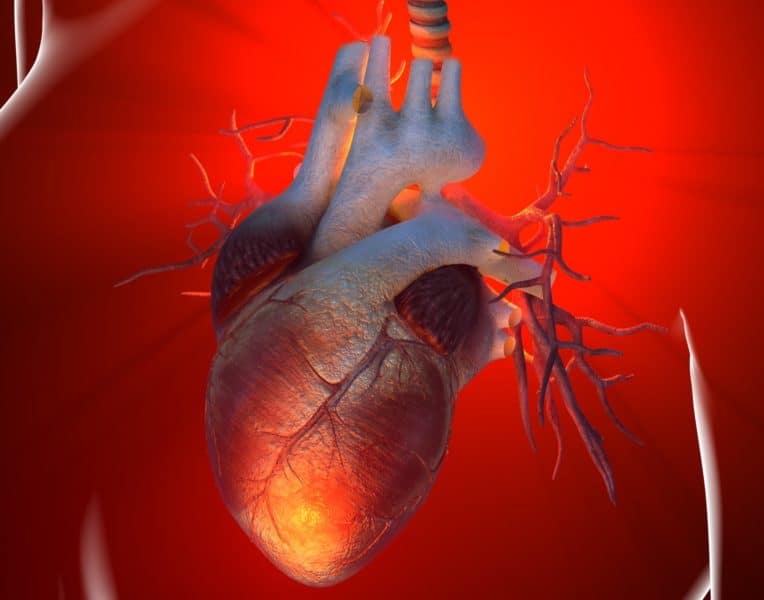First-responder cells launching the repair after a heart attack are so frantic about fixing the damage that they promote more inflammation than necessary, new research in mice suggests.
Based on those findings, scientists are pursuing interventions that would bring more balance to the healing process after a heart attack.
In a series of studies, the researchers have identified the cellular events that lead to a call for reinforcements – an extra wave of the first responders – to the site of repair. This process leads to the release of proinflammatory proteins at a point when they aren’t needed, creating conditions that may threaten optimum healing of the heart.
The first-responder cells in question are neutrophils, the most abundant of all white blood cells whose job is to heal wounds and clear away infection. Researchers are exploring potential drugs or genetic techniques that could block the call for neutrophil backups or limit the release of proteins that drive up inflammation.
“We just want to prevent further damage that happens to the heart by toning down the neutrophil response,” said Prabhakara Nagareddy, associate professor of cardiac surgery in The Ohio State University College of Medicine. “The neutrophils are misguided and they overreact. How can we tame them? How can we bring that down?
“We started looking at the role of inflammation in scar formation to see if we could potentially alter that process.”
The most recent study on this work is published in the Jan. 4, 2022, issue of the journal Circulation.
The loss of nutrients and oxygen during a heart attack causes death of cardiomyocytes (cardiac muscle cells) and other cells that eventually result in scar formation at the site of that loss. Even with restoration of blood flow to the damaged part of the heart, scarring can’t be completely avoided.
“You have an injury, and the body will take care of the injury. Sometimes not doing anything is fine because the body has a healing process,” Nagareddy said. “But medicine is all about healing better and identifying the mechanism that improves healing.”
For these studies, the researchers induce heart attack symptoms in mice and use those models to observe how inflammation starts and increases during the heart repair process.
Neutrophils are definitely a key part of the problem. In an earlier study, Nagareddy and colleagues found that heart-attack patients with higher numbers of neutrophils in their blood upon hospital admission, or even after doctors restored blood flow, had the worst outcomes.
However, because neutrophils are vital to all wound healing and infection fighting, their first-responder role in heart repair cannot be bluntly targeted for elimination. Instead, the team has zeroed in on signals sent to the immune response control center – the bone marrow – that trigger ramped-up production of neutrophils.
As part of that investigation, the researchers found that the first wave of neutrophils to arrive at the damaged heart consider the injury so severe that they sacrifice themselves to prevent further damage, releasing their entire contents – including proteins called alarmins. These alarmins in turn activate sensors in a second wave of neutrophils, priming those cells for more intense action.
These primed neutrophils then do something unexpected: They reverse migrate from the heart to the bone marrow and release a proinflammatory protein there, which prompts stem cells in the bone marrow to churn out even more neutrophils – all processes that perpetuate inflammation at a time when it’s no longer needed for heart repair.
In the most recent paper, experiments in mice using genetic techniques or drugs uncovered at least two potential targets to consider for intervention: limiting the primed neutrophils’ reverse migration or suppressing neutrophils’ release of the proinflammatory protein in the bone marrow. The studies showed that successful inhibition of either mechanism led to better cardiac outcomes and less scarring in the mice.
“Neutrophils don’t see the difference between one tissue and another, so we need to focus on a signaling pathway or mechanism while the neutrophils are busy, and find the right time to intervene,” Nagareddy said. “My lab is hoping to find anti-inflammatory therapies that could be administered just before arteries are unclogged. It would have to be administered while the inflammatory response is in progress – we need to have a certain amount of inflammation in the heart to begin the repair mechanisms.”
This work was supported by grants from the National Institutes of Health and startup funds from Ohio State.
Ohio State co-authors on the most recent Circulation paper include Gopalkrishna Sreejit, Robert Jaggers, Baskaran Athmanathan, Ki Ho Park, Jillian Johnson, Albert Dahdah and Jianjie Ma.

